Gentrification is a commonly used term when referring to present-day Chicago neighborhoods.
What is gentrification?
In simple terms, it is the process of renovation to a neighborhood to better appeal to a newer market. This can lead to many issues for those currently residing in the areas in which are being revamped due to the fact that it will be completely changing the timeless dynamic that originated from that neighborhood. Bringing in a new variety of people, this can drive out local businesses and families that have been there for many years. The modernization of these sectors usually appeal to younger masses.
The 606 Bloomingdale Line is located on the northwest side of Chicago. It is a 2.7 mile upraised railroad. It is now a remodeled trail that locals can use for their own recreational active pleasure. The east side of the trail is adorned with exclusive loft style homes with a high price point. On the west side lives longstanding industrial properties and their residents.
There has been continual talk as to whether or not the west side of the trail will receive the same remodeling as the east side has. The argument proposing the renovation is the notion of creative offices, coffee shops, and bars being built for residents and active users of the trail. The downside to this possible renovation is the rising prices for residential properties and job expatriation for the west side locals.
Neighborhoods such as Logan Square, Uptown, Pilsen, and many more have been the trailblazers for the gentrification trend that has been regularly seen within older areas in Chicago.
Though this movement has been popular among the millennial generation, it is leaving a bad taste in the mouth of long-time residents within these areas. 2020 might be the year that gentrification can continue to be seen as a controversial fad or a positive change for definitive neighborhoods in Chicago.


